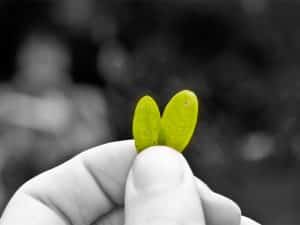Coca leaves have been a traditional symbol for Andean cultures throughout its history.
Here is a Timeline of the most Important History Events surrounding the sacred coca leaf.
- 6000 BC – The coca plant starts to appear in Peru.
- 3000 BC – Coca chewing expands to all of South America
- 1500 AD – Incas have Coca plantations inside their Empire.
- 1505 AD – Coca is known in Europe.
- 1575 AD – Spaniards use coca leaves to make native slaves more productive during mining.
- 1662 AD – Abraham Cowley provided the earliest reference to coca in English literature in a poem called “A Legend of Coca”.
- 1708 AD – Coca is mentioned in medical literacy, Institutiones Medicae written by medical/botanist Herman Boerhaave.
- 1850 AD – Coca tinctures used in throat and ocular surgery.
- 1855 AD – Chemist Friedrich Gaedcke extracts cocaine alkaloid (non-addictive) from the coca leaves.
- 1859 AD – Albert Niemann, from Göttingen University, synthesizes cocaine hydrochloride (addictive).
- 1863 AD – Angelo Mariani patents Vin Mariani, a combination of coca extract and wine.
- 1865-1905 AD – Various medical patents in the United States contains the cocaine component.
- 1870s – Cultivation of the coca plant is introduced in Southeast Asia, particularly in the Java island.
- 1884 – The use of cocaine as an anesthetic in ocular surgery was popular.
- 1884 – Sigmund Freud publishes Über Coca or “About Coca” which recommends the use of cocaine to treat various medical conditions.
- 1886 – John Pemberton presents Coca Cola, which contains cocaine, kola syrup, sugar and caffeine. Making it the most popular carbonated soft drink.
- 1903 – Coca Cola removes the cocaine substance from their drink, but maintains the rest of the coca leaves components, still imports “de-cocanized” extract from Peru to this day.
- 1914 – United States approves the Harrison Narcotics Tax Act that regulates the sale of cocaine and other narcotic drugs.
- 1948 – Howard Fonda, a VP of a pharmaceutical drug company, travels to Peru to “evaluate” coca, but not speaking the language or knowing the land, writes a prejudiced and racist report. In 1949, the U.N. unfairly adopts his statement about the coca leaves.
- 1961 – Single Convention on Narcotic Drugs was approved, coca leaves unjustly fall under the same category as cocaine.
- 1987 – World Council of Indigenous Peoples, declare a support of traditional coca use in the Andean Culture.
- 1989 – Argentina permits chewing coca leaves and drinking coca tea.
- 1995 – Inform from the World Health Organization of the UN indicates that coca leaves have no negative side effects to health, but is suppressed with help from the pharmaceutical companies.
- 2005 – On December 6, 2005 in Peru, the State officially declared the traditional cultural uses of the coca leaf as an intangible cultural heritage of the nation.
- 2008 – United States suspends Bolivia from the Andean Trade Promotion and Drug Eradication Act (war on drugs) for not eradicating enough coca leaves.
- 2013 – The United Nations recognizes the rights of Bolivians to chew coca leaves.
- 2013 – European Union’s commissioner, Andris Piebalgs, doesn’t exclude to allow the import of coca industrialized products backed by scientific evidence, insists there is a problem which is perception and explains that anything with the word coca in it is not well looked at, because they immediately associate it with cocaine. Mentions that for there to be a well establish market they will first need to educate the public opinion.
- 2013 – UK Parliamentary group issues a report urging to legalize the use of coca.
- 2015 – National Mandate of Colombian Coca Growers is form.
- 2016 – Pope Francis requested coca leaves to chew and coca tea to drink on his visit to Bolivia.
- 2017 – Andean Leaves was created.
- 2018 – Coca leaves will become the next Superfood.
- 2019 – Desperate Venezuelan migrants turn to Colombia coca plantations
- 2021 – The President of the Republic Pedro Castillo on Sunday affirmed that his Government contemplates industrializing coca leaves and aims to work for Peru to have a range of industrialized products that can go directly to the population.









Asthmatic since childhood. I haven’t had an asthma attack since drinking coca tea. Any other asthma symptoms are few and far in between. Coca tea is a cure for chronic fatigue syndrome. I speak on this as patient and not a doctor.